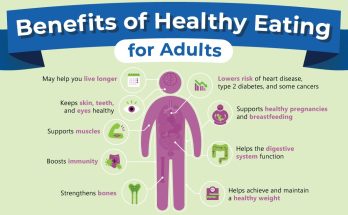Everyone experiences weeks where good intentions slip away, routines unravel, and unhealthy habits take center stage. Whether it is too many late nights, skipped workouts, fast food lunches, or simply neglecting downtime, these periods are a normal part of modern life. The danger comes not from the lapse itself but from the mindset that follows. Many people respond with guilt, frustration, or an all-or-nothing mentality, believing that one week of poor habits has undone months of progress. In reality, the body and mind are remarkably resilient. What matters most is how you reset, recalibrate, and return to balance. Just as businesses recover from a quarter of missed targets by refocusing on fundamentals, individuals can regain momentum by approaching a reset with clarity and intention.
The first step in resetting is to avoid overcorrection. A common reaction to a week of bad habits is to swing to extremes, whether by skipping meals, overexercising, or setting unsustainable rules. While the intention may be good, this approach often leads to burnout and discouragement, creating another cycle of failure. Instead, a reset is best approached with steady, realistic adjustments. Much like businesses that stabilize by addressing core inefficiencies instead of chasing drastic solutions, individuals benefit from small, deliberate actions that rebuild consistency. Returning to basics—hydration, sleep, balanced meals, and gentle movement—creates a foundation for recovery without overwhelming the system.
Mindset plays a pivotal role in this process. Dwelling on setbacks only reinforces the very stress that fuels bad habits. By reframing the week as a temporary deviation rather than a defining failure, individuals can create the psychological space to move forward productively. Consider how leaders treat underperformance in business: instead of punishing the team, they look at root causes, adjust strategies, and focus on future outcomes. Applying this logic to personal health means identifying what led to the lapse—was it stress, lack of planning, or simply fatigue?—and making subtle changes to prevent the same triggers from taking over again.
Restoring structure is another important element of resetting. A week of bad habits often disrupts rhythm, leaving individuals feeling unanchored. Reintroducing structure can be as simple as setting a consistent bedtime, planning meals for the next few days, or scheduling short breaks for movement during work hours. These are not drastic shifts but gentle reminders that discipline creates freedom. Just as businesses rely on clear frameworks to return to stability after a disruption, individuals thrive when they anchor themselves to routines that support healthy decisions without requiring constant willpower.
It is also valuable to focus on small wins rather than chasing perfection. After a week of poor choices, aiming for flawless performance is unrealistic and discouraging. Instead, celebrating incremental improvements helps rebuild confidence. For instance, drinking water instead of soda at lunch or choosing a balanced dinner after a hectic day are small steps that signal momentum. Over time, these choices compound, much like small improvements in business operations lead to significant gains when sustained consistently. The key is recognizing progress, no matter how modest, and allowing it to serve as motivation for continued effort.
Physical activity can serve as both a reset and a release. After days of sedentary behavior or missed workouts, the temptation may be to dive into intense exercise as a form of punishment. Yet this mindset risks injury and reinforces negative associations with movement. A healthier approach is to view exercise as an opportunity to reenergize, whether through a walk, stretching, or a moderate workout that restores circulation and focus. This mirrors the way companies often restart with low-risk, high-return projects after setbacks, building momentum before tackling larger challenges. Movement does not need to be extreme to be effective; it simply needs to be consistent.
Nutrition is another powerful lever for resetting. After a week of indulgence or convenience foods, the body often craves balance. Instead of drastic cleanses or rigid restrictions, reintroducing nutrient-dense meals supports recovery. Whole foods rich in fiber, protein, and healthy fats help stabilize blood sugar and restore energy, while hydration replenishes systems that may have been taxed by excess caffeine or alcohol. Viewing food as fuel rather than as a tool for reward or punishment helps shift the narrative. This perspective echoes strategic resource allocation in business: putting the right resources in the right places sustains long-term growth.
Equally important is rest and recovery. Bad habits often include late nights, excessive screen time, or inconsistent sleep, which take a toll on focus and mood. Resetting requires treating sleep as a non-negotiable asset. By prioritizing consistent bedtimes, reducing stimulants in the evening, and creating a restful environment, the body is able to repair and restore. For professionals, this is especially critical, as mental clarity and emotional regulation directly affect performance at work. Just as organizations allocate time for system maintenance to prevent breakdowns, individuals must give their bodies and minds the rest they need to operate at their best.
Finally, a reset works best when it is framed as part of a long-term journey rather than a temporary fix. A week of bad habits does not erase progress, and a week of good habits does not guarantee permanent success. Health and productivity are built on patterns, not isolated moments. Viewing the process through this lens reduces the pressure to be perfect and instead emphasizes resilience and consistency. In the same way that successful businesses weather setbacks by focusing on long-term vision, individuals thrive when they see resets as opportunities to realign rather than as punishments for past choices.
Resetting after a week of bad habits is less about discipline and more about perspective. It is about accepting imperfection, returning to fundamentals, and making small adjustments that compound into meaningful change. With the right mindset and deliberate actions, setbacks become temporary detours rather than roadblocks. For busy professionals, this approach provides not only a path back to balance but also a reminder that resilience is built not in moments of perfection but in the ability to recover and move forward with clarity and intention.
Would you like me to also create a shorter, 400–500 word version of this article that could be used for workplace newsletters or quick wellness posts?



